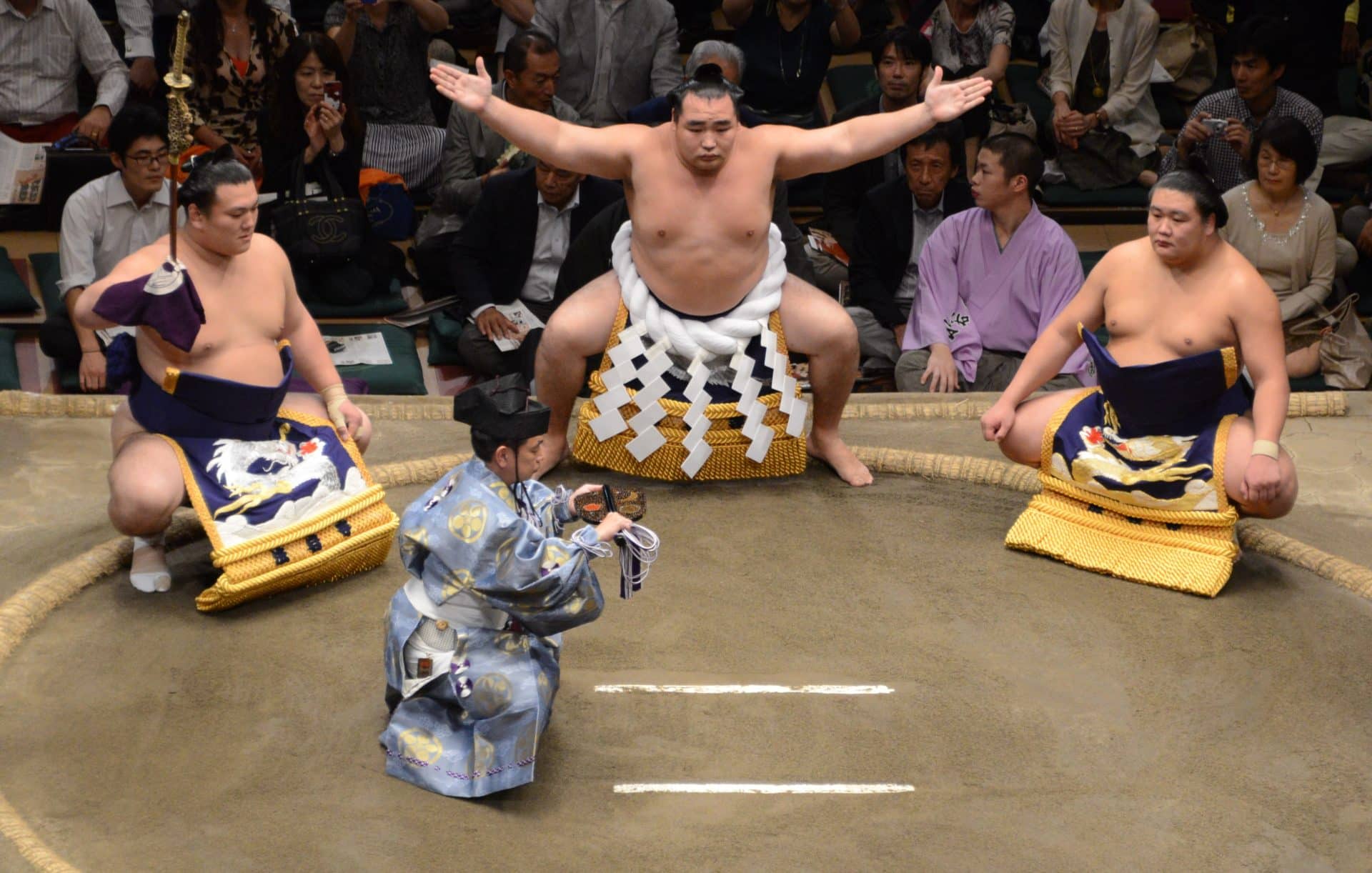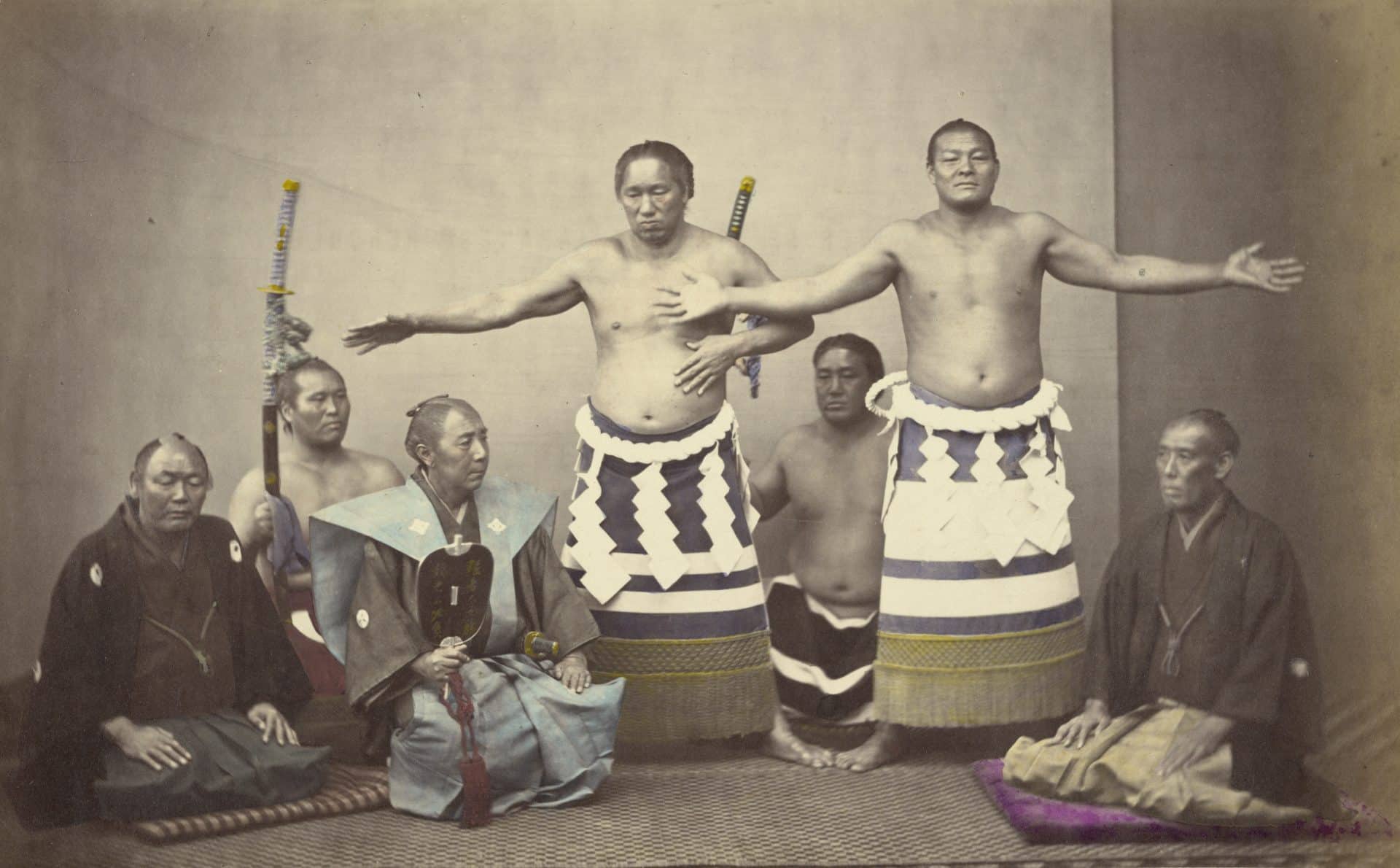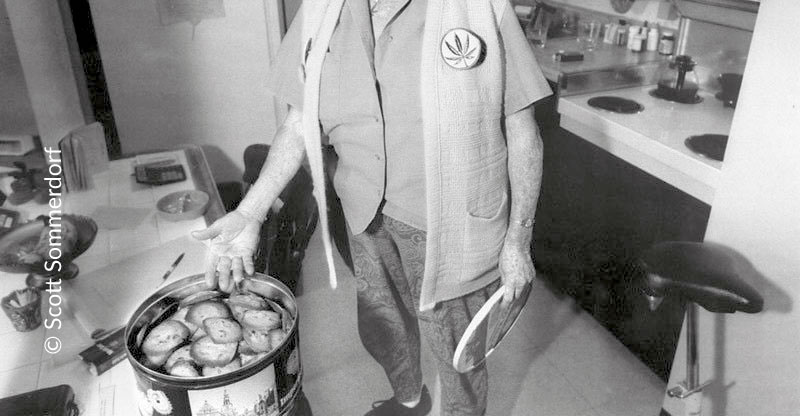The ring, or dohyo, often stood in a Shinto shrine. Sumo wrestlers entertained the kami during festivals, hoping to secure a good harvest through their performance in the sport. The fights were part of fertility rituals. Sometimes, there is also a component of divination in these festivals, where the outcome of the wrestling matches is believed to foretell the abundance of crops or the success of fishing.
The actual encounter in the ring is surrounded by ritual acts and symbolism. A kamidana (home altar) is usually placed near the ring to indicate that the space is sacred.
Purification with salt and stamping
As when visiting a Shinto shrine, cleansing is also central to the fight. The mouth is rinsed with water. The audience reacts frantically as the opponents throw handfuls of salt into the ring; salt is used for cleansing in Shinto rituals and also as an offering to the kami.
Before the fight, wrestlers raise their knees and stomp their feet hard into the floor. This ritual stomping is known as Shiko, and is believed to purify the ground by driving away evil spirits. Influenced by Onmyodo (traditional Japanese esoteric cosmology) and Shinto, these movements have become stylized over time and are important in many shrine sumo rituals.
The title yokozuna is the highest attainable rank for a sumo wrestler. It literally means ‘horizontal rope’ and is derived from the white hemp rope, the tsuna, which is worn around the waist. A tsuna can weigh up to 15 kilos and is made from hemp bark during a special three-day ritual (tsunauchi). The tsuna is not used during the matches themselves, but only worn during the ring ceremony.










